
Mochiliante

Mochiliante
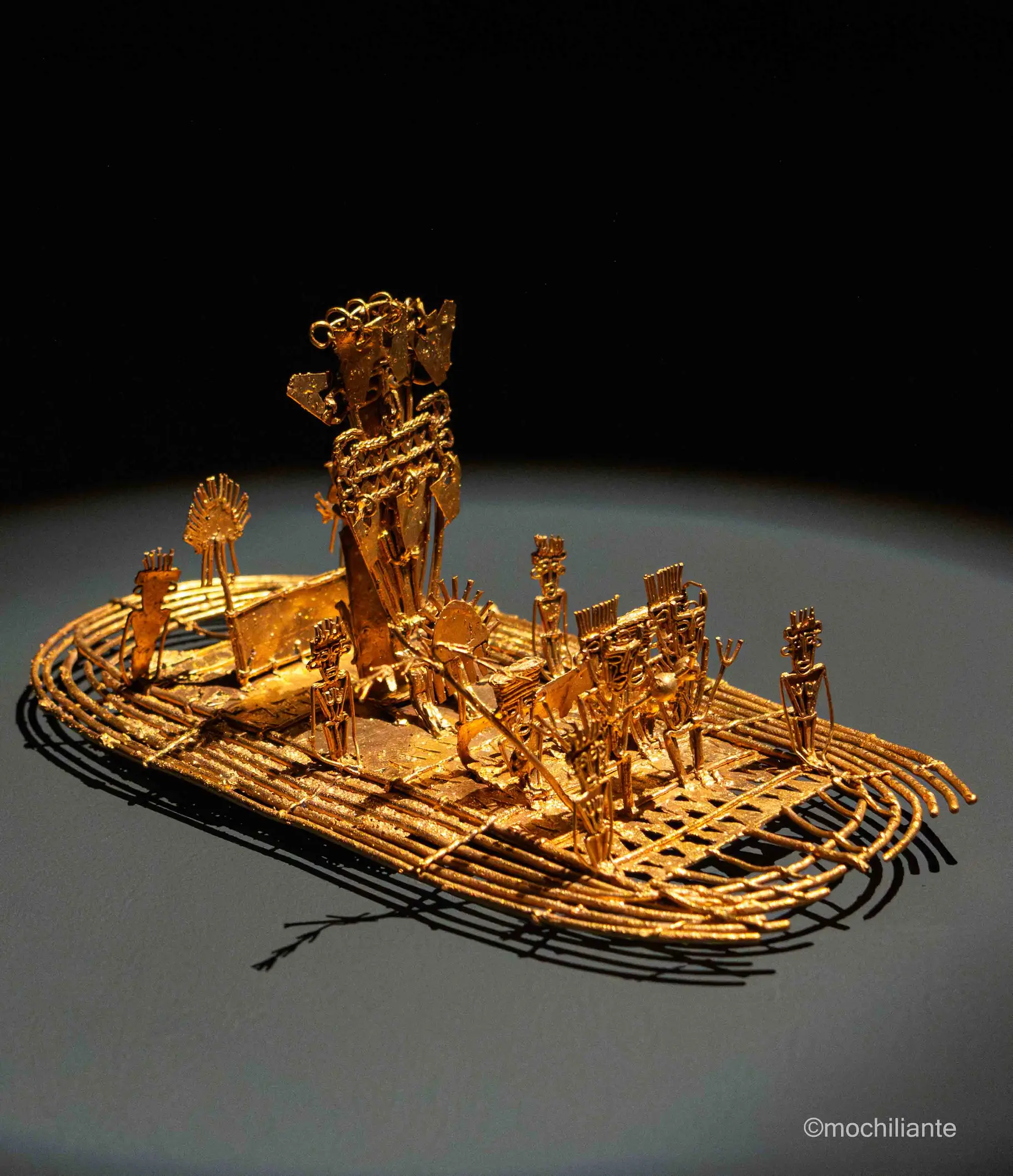
The Gold Museum, Bogotá is a window to an ancient civilization, a testament to the cultural and archaeological wealth of Colombia. It is a tribute to pre-Columbian goldsmithing, a testament to indigenous culture, and a monument to the history of gold in Colombia.
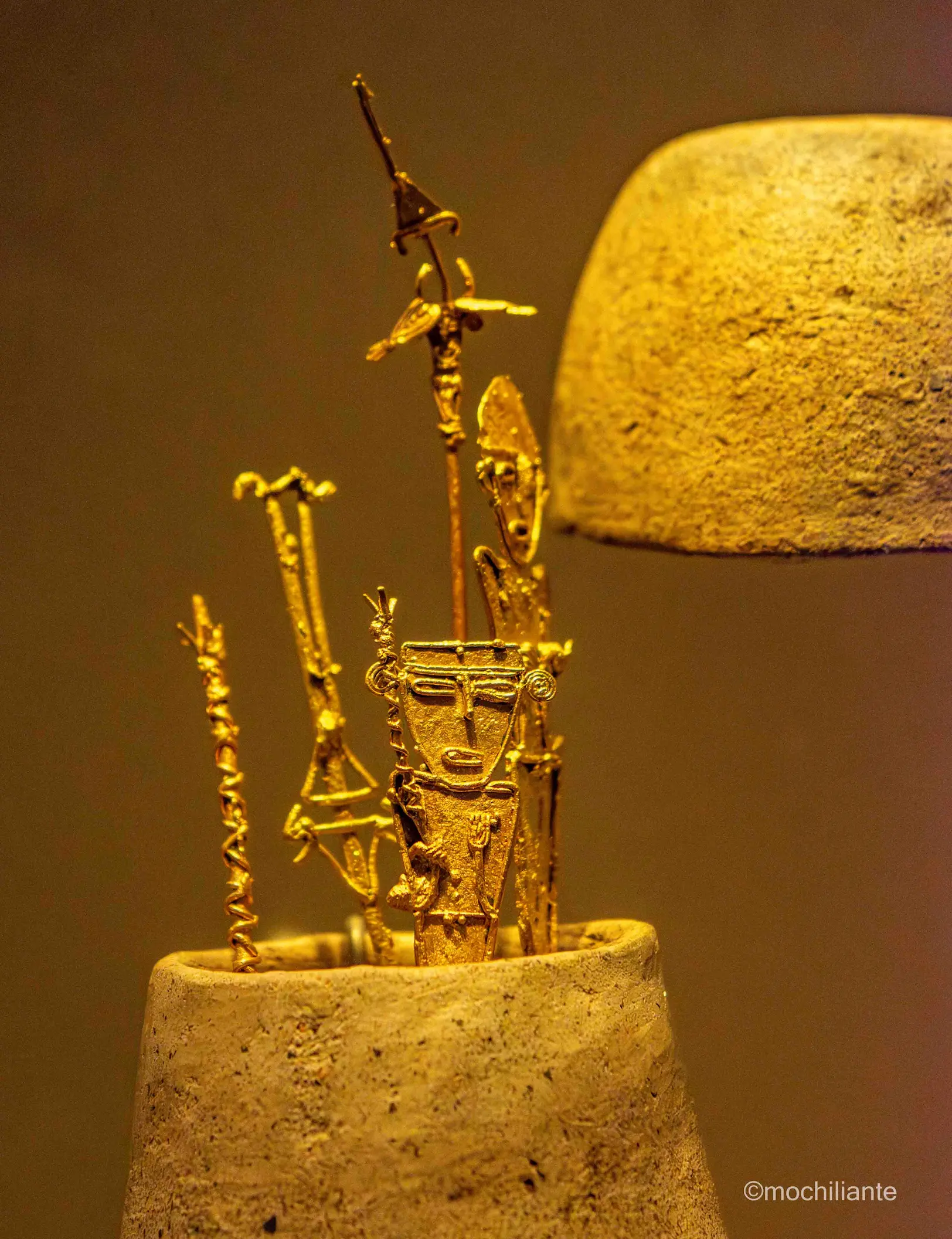
The museum has earned a place on the list of the best history museums on the planet, according to National Geographic magazine, sharing honors with museums such as Auschwitz-Birkenau in Poland, the Vatican museums in Italy, and the Pergamon Museum in Germany.
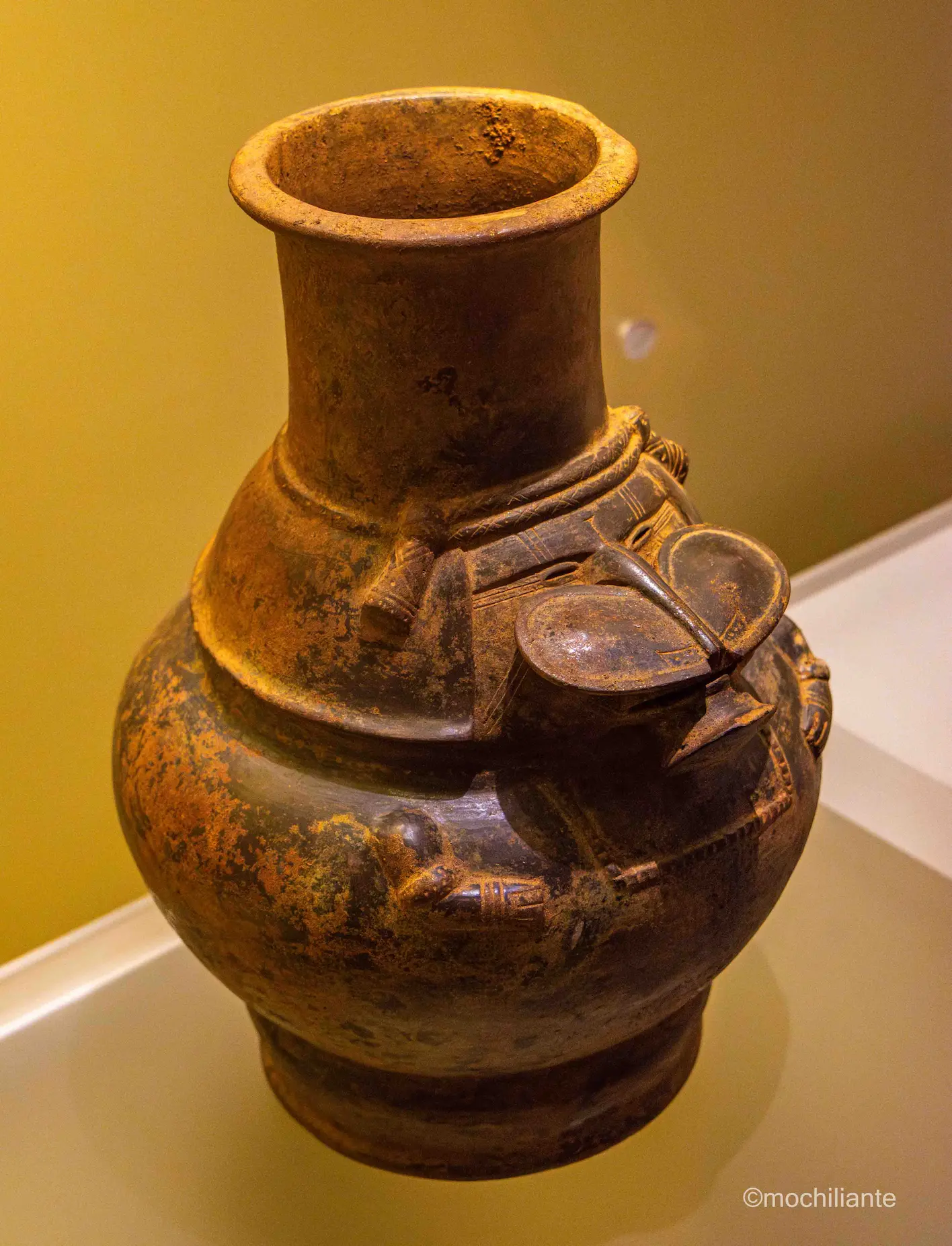
The Gold Museum is in the heart of the city of Bogotá. It is located at Carrera 6 #15-88, in the historic center of the city.

Its hours are from Tuesday to Saturday, from 9:00 a.m. to 7:00 p.m. and the entrance fee is approximately $5,000 COP (1.4 Dollars)
On Sunday it is from 10:00 am to 4:00 pm and admission is free
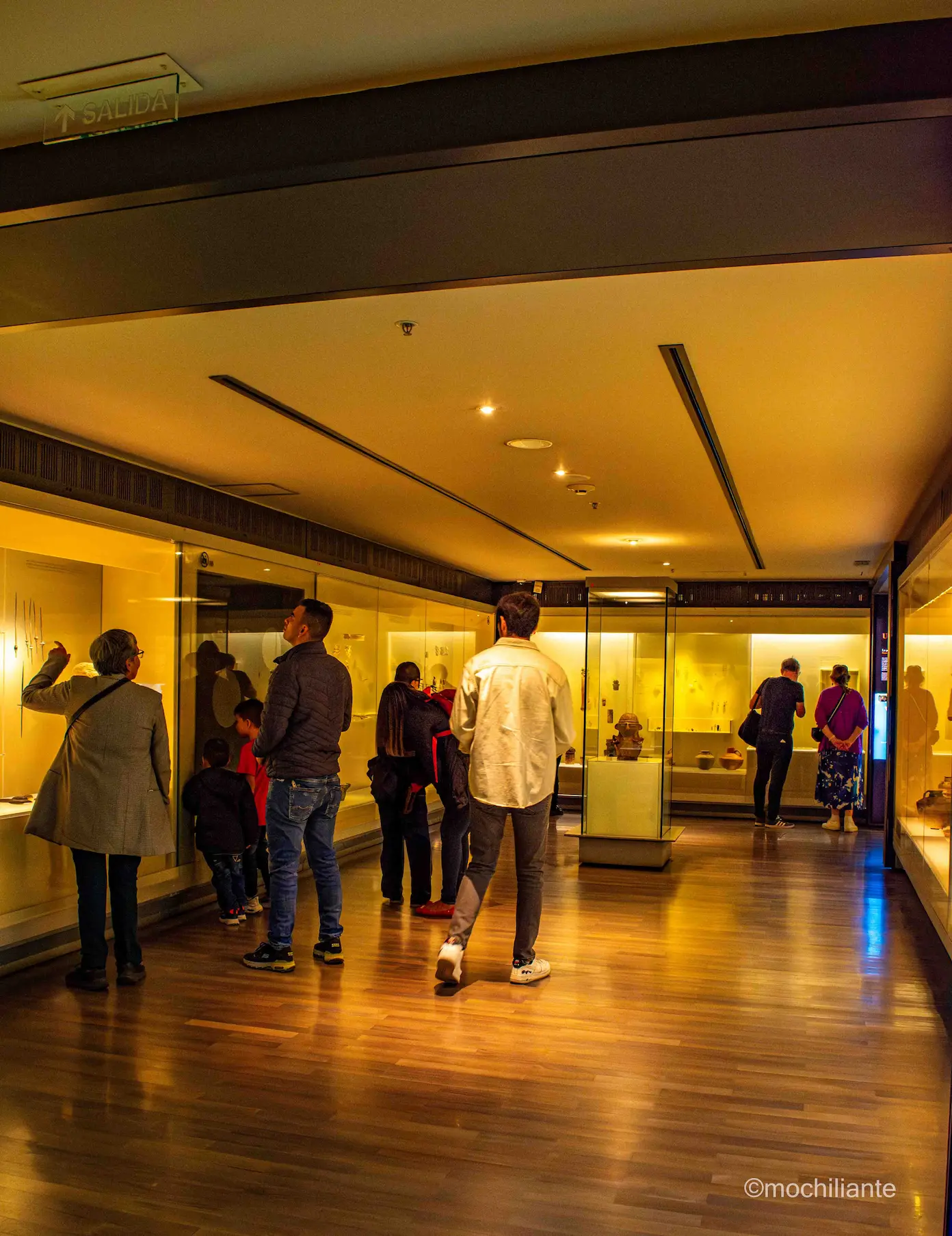
If you plan to travel between today and September 30, 2025 , by booking through Booking with Mochiliante, you can get a 20% discount on your next getaway by clicking here
Bogotá and its historic center have many hotel or accommodation options, but we recommend these that we found from the recommendations of other travelers
Masaya Bogotá: Located in La Candelaria, Hostal Masaya provides a comfortable stay with a shared kitchen and free WiFi. It offers private suites and shared dormitories, all with hot water. It has room service and common areas.
Botanico Hostel: Provides a warm environment with a garden, common lounge, terrace, and bar. In addition to concierge and barbecue, it offers 24-hour reception, airport transfers, shared kitchen, and free WiFi.
Torre Ventto Lofts: Located near the Luis Ángel Arango Library, Bolívar Square, and the Gold Museum, it offers free WiFi. Its units have a terrace with views, TV, kitchen, and private bathroom with a hairdryer.
If you plan to travel between today and September 30, 2025 , by booking through Booking with Mochiliante, you can get a 20% discount on your next getaway by clicking here
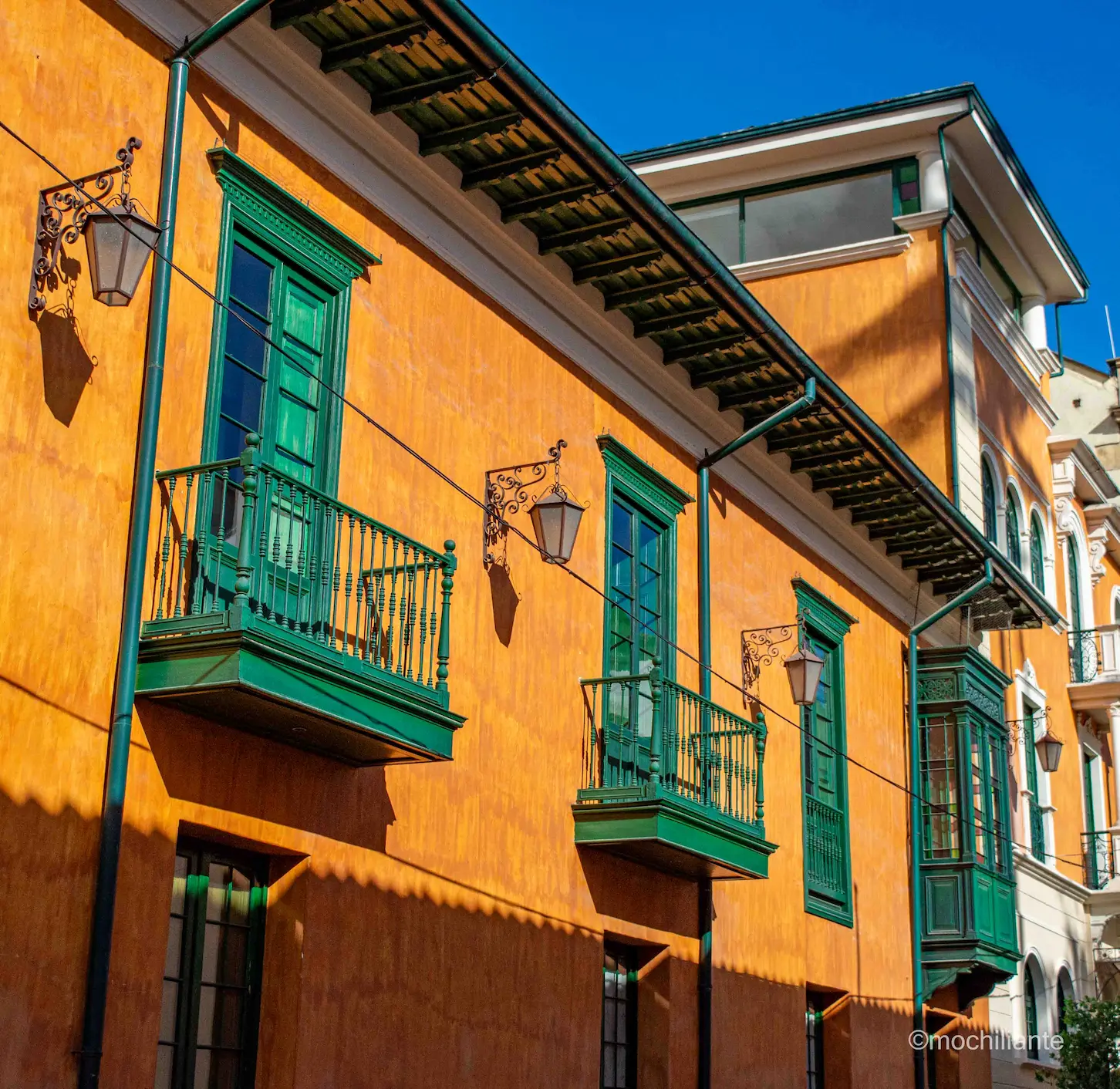
The Gold Museum Bogotá is a testament to the archaeological and cultural wealth of Colombia. This iconic museum, located in the heart of Bogotá, houses the largest collection of pre-Hispanic goldsmithing in the world.
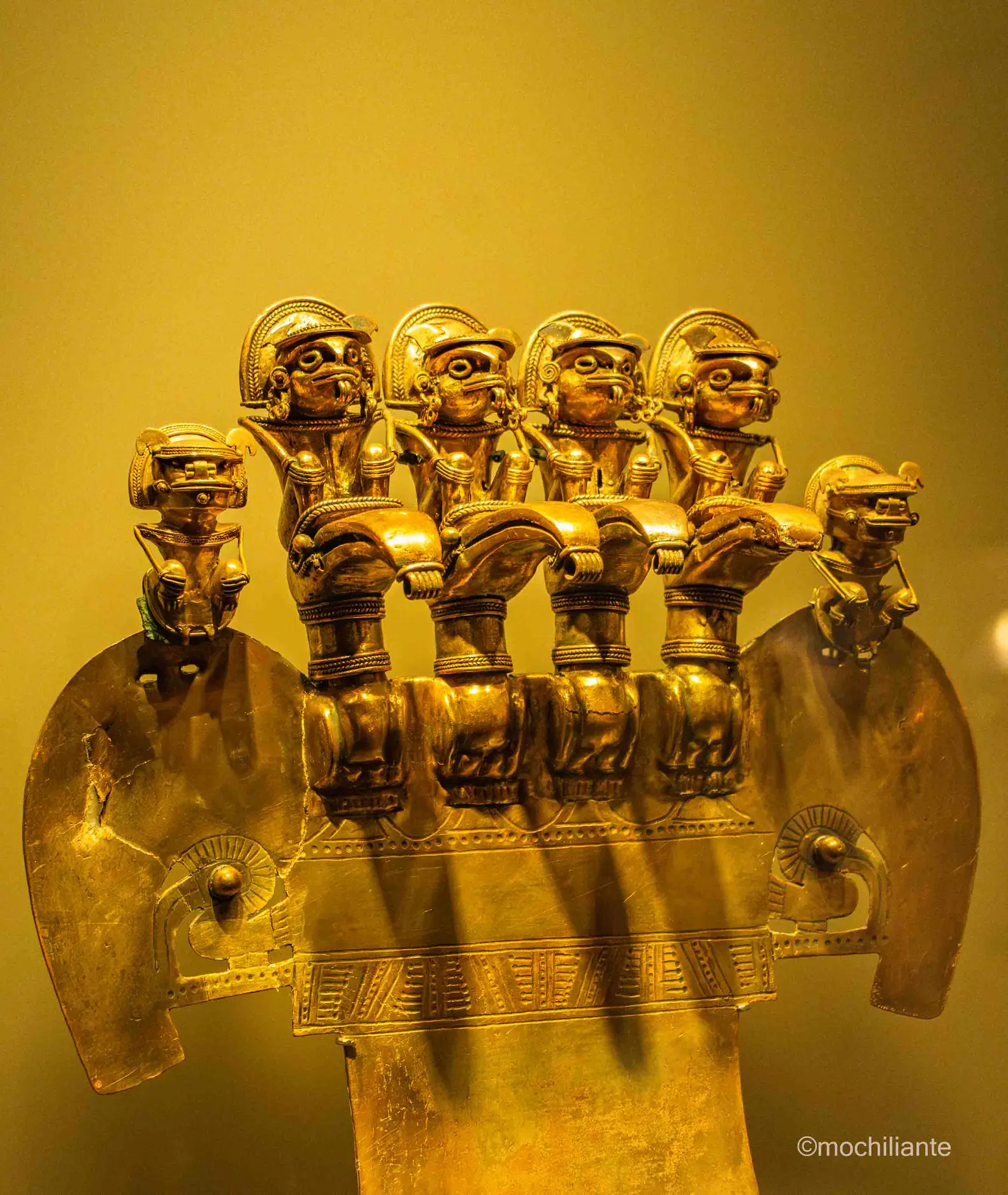
Since its inauguration in 1939, the museum has been a central pillar in the conservation and promotion of Colombia's cultural heritage.
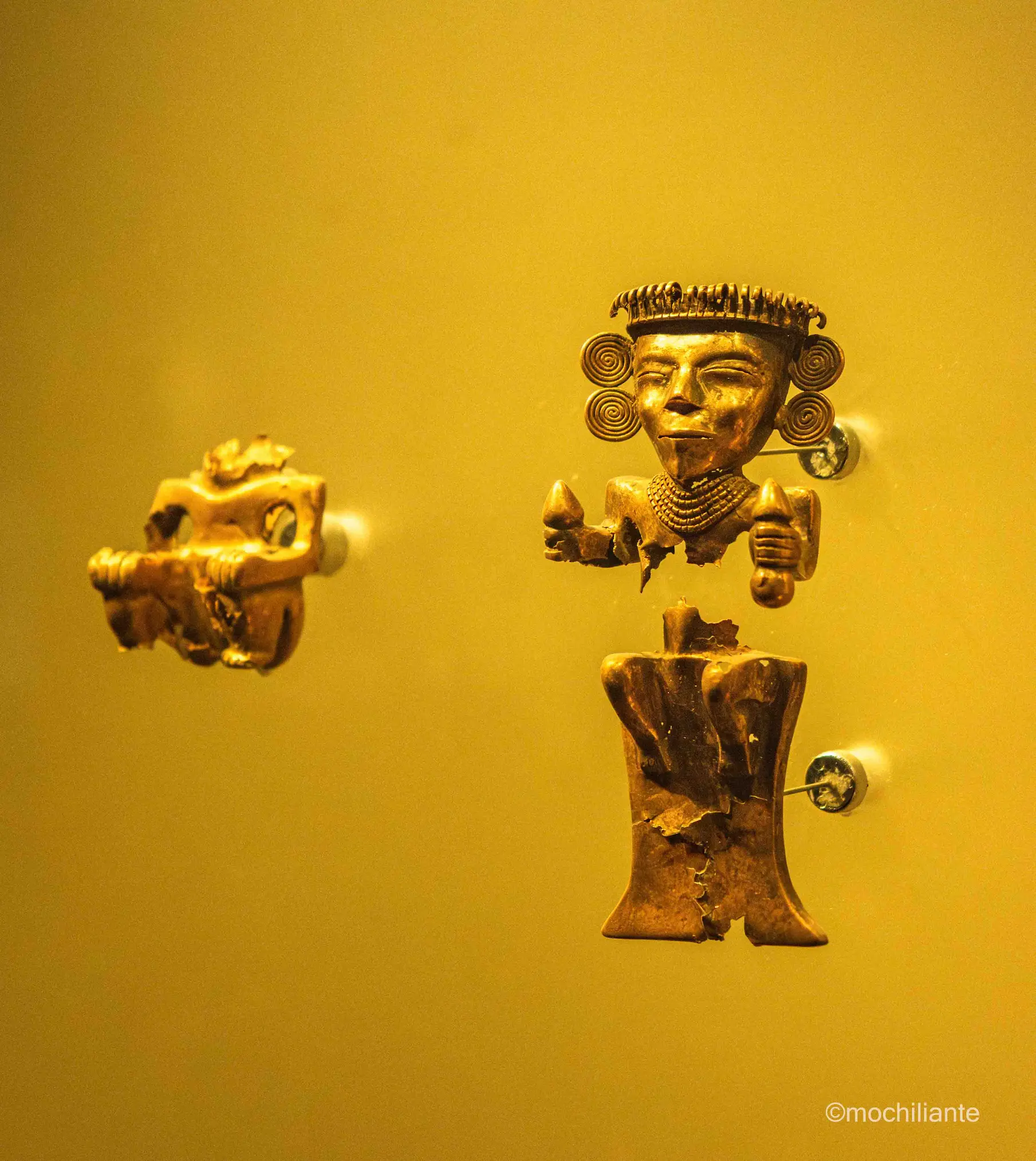
The museum houses a large collection of 34,000 gold pieces, each one a testament to the country's historical and cultural wealth. These pieces were created by different indigenous cultures, such as the Muisca and Tayrona, and were used both in everyday life and in sacred rituals.
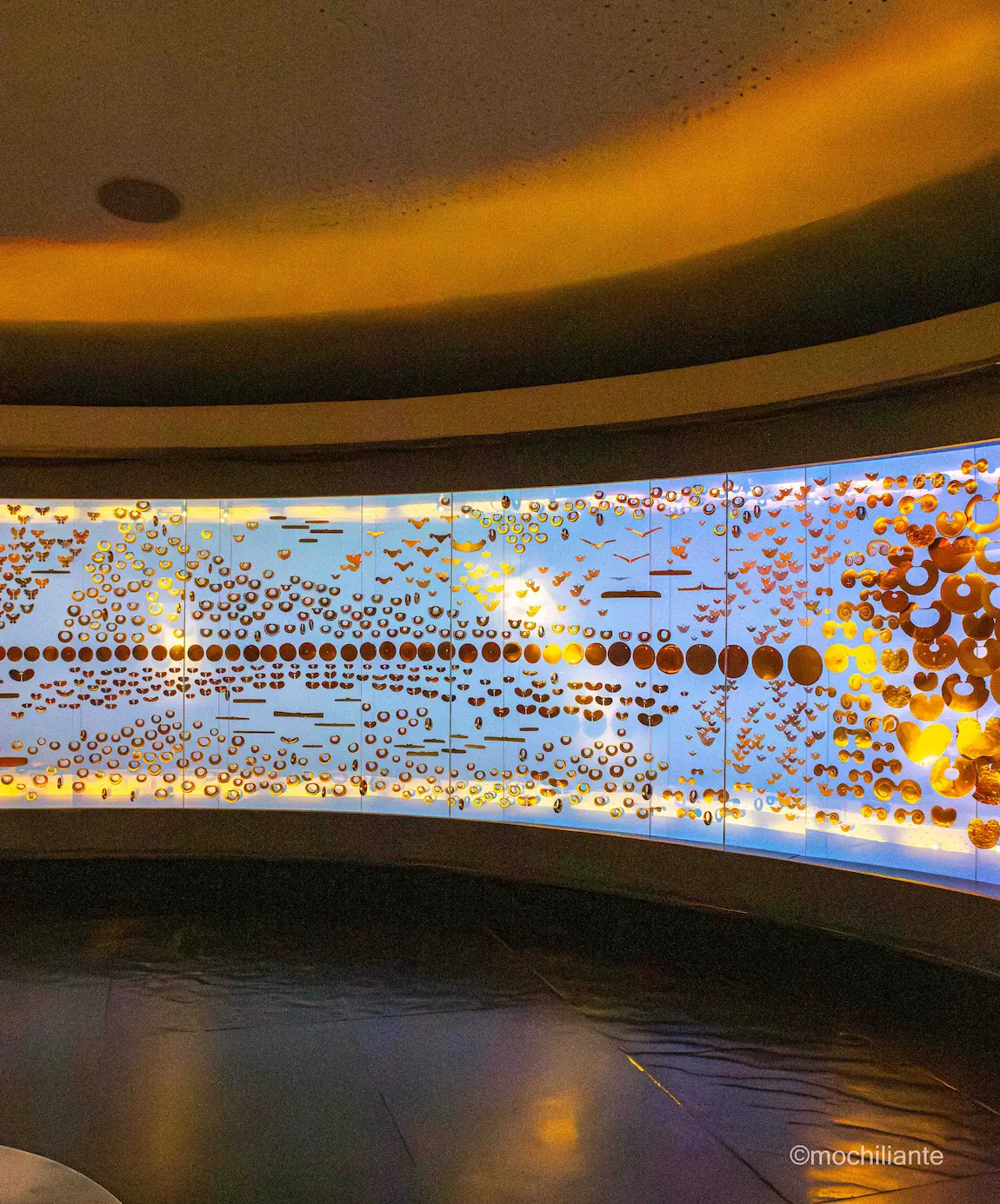
In addition to the gold pieces, the museum also preserves a notable collection of 20,000 lithic, ceramic, and textile objects produced by various pre-Columbian cultures such as the Muisca, Tairona, Quimbaya, Calima, and Zenú.
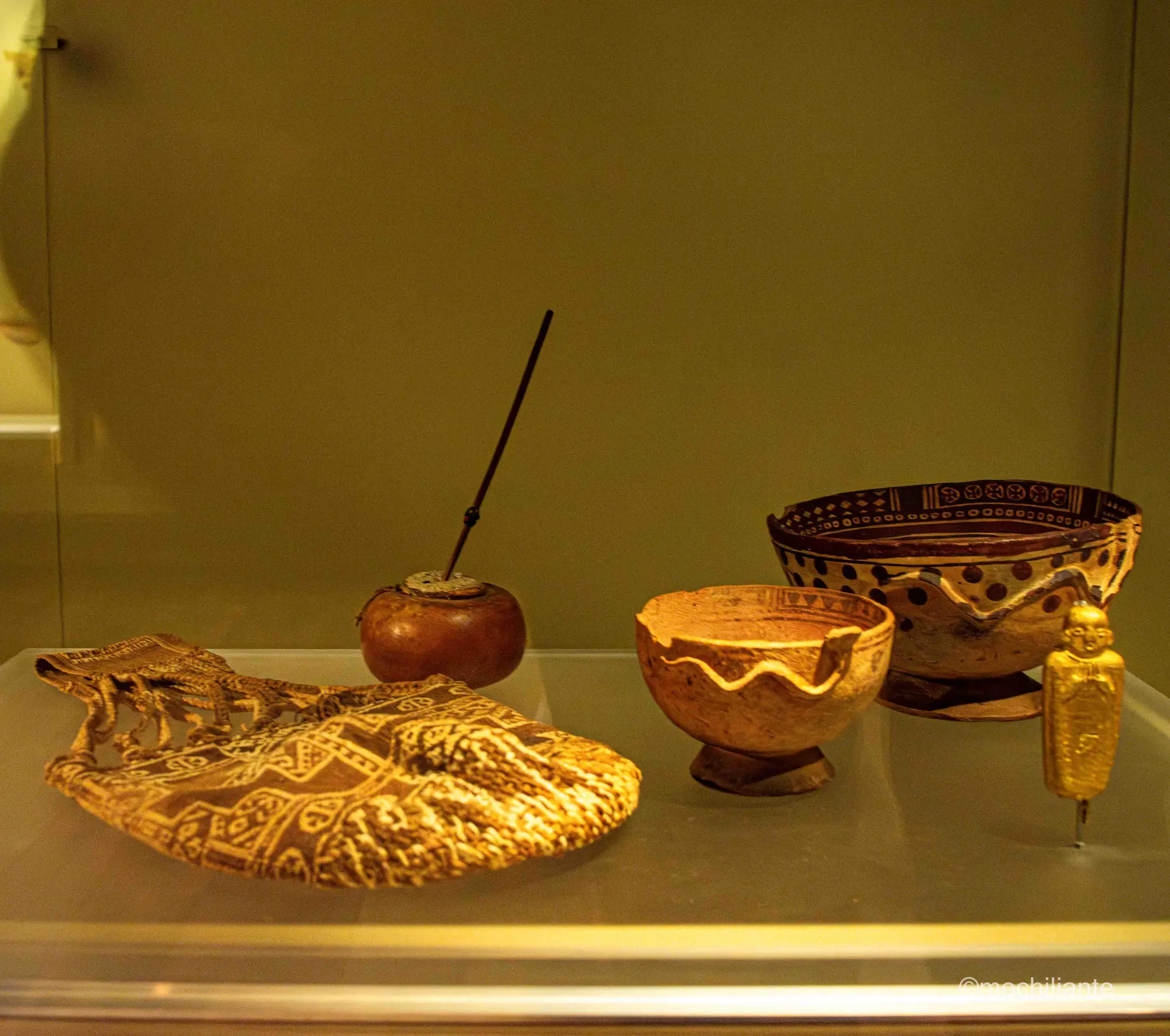
The Muisca culture is one of the most prominent indigenous cultures in Colombia. They were known for their advanced goldsmithing and their rituals related to gold. The Gold Museum houses a large number of Muisca artifacts, which provide a fascinating insight into this ancient civilization.
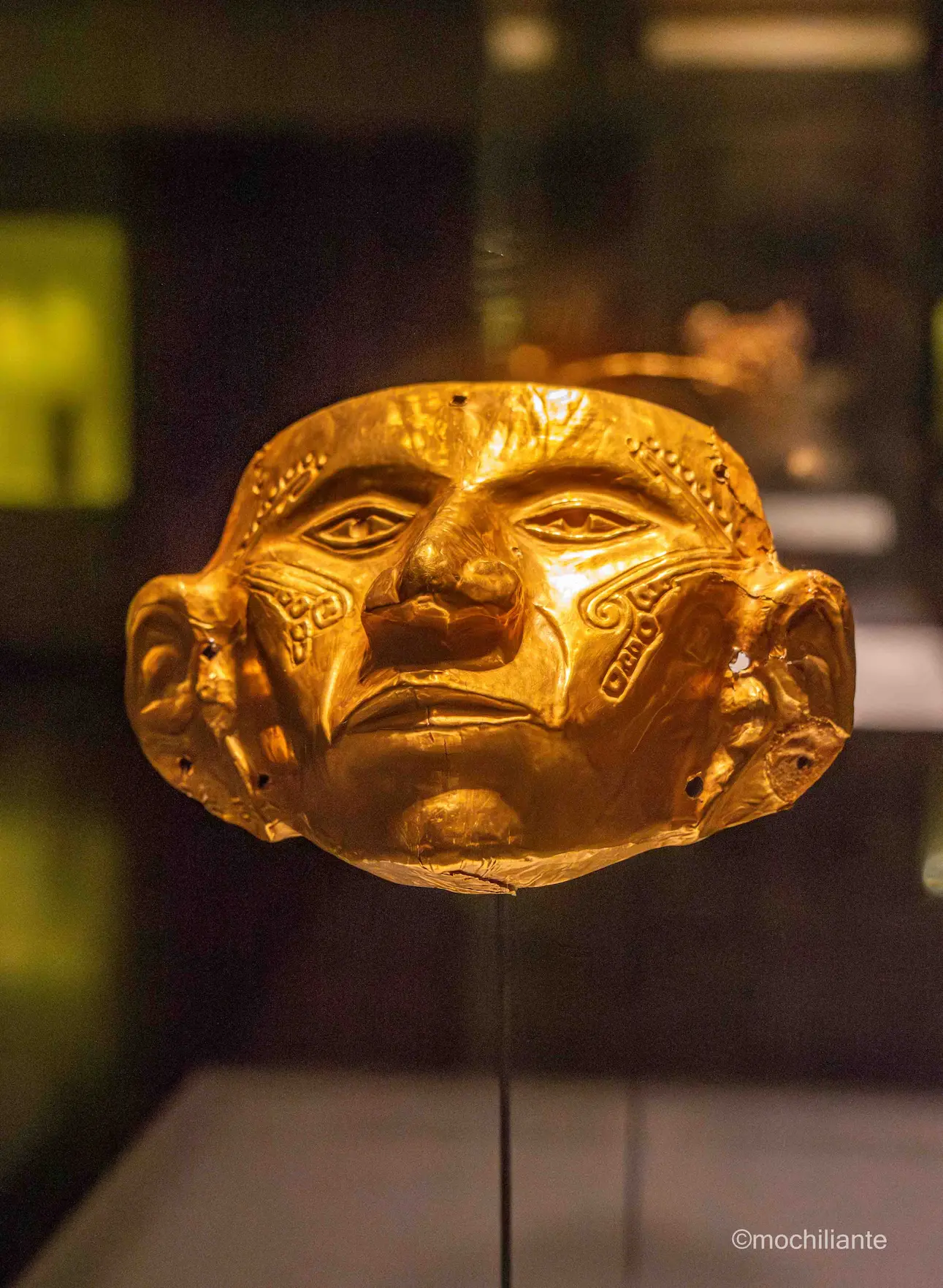
The legend of El Dorado originates from the Muisca culture. According to the legend, there was a place on the American continent where everything was made of gold. This obsession motivated many Europeans to make long journeys during the 16th century in search of this treasure.
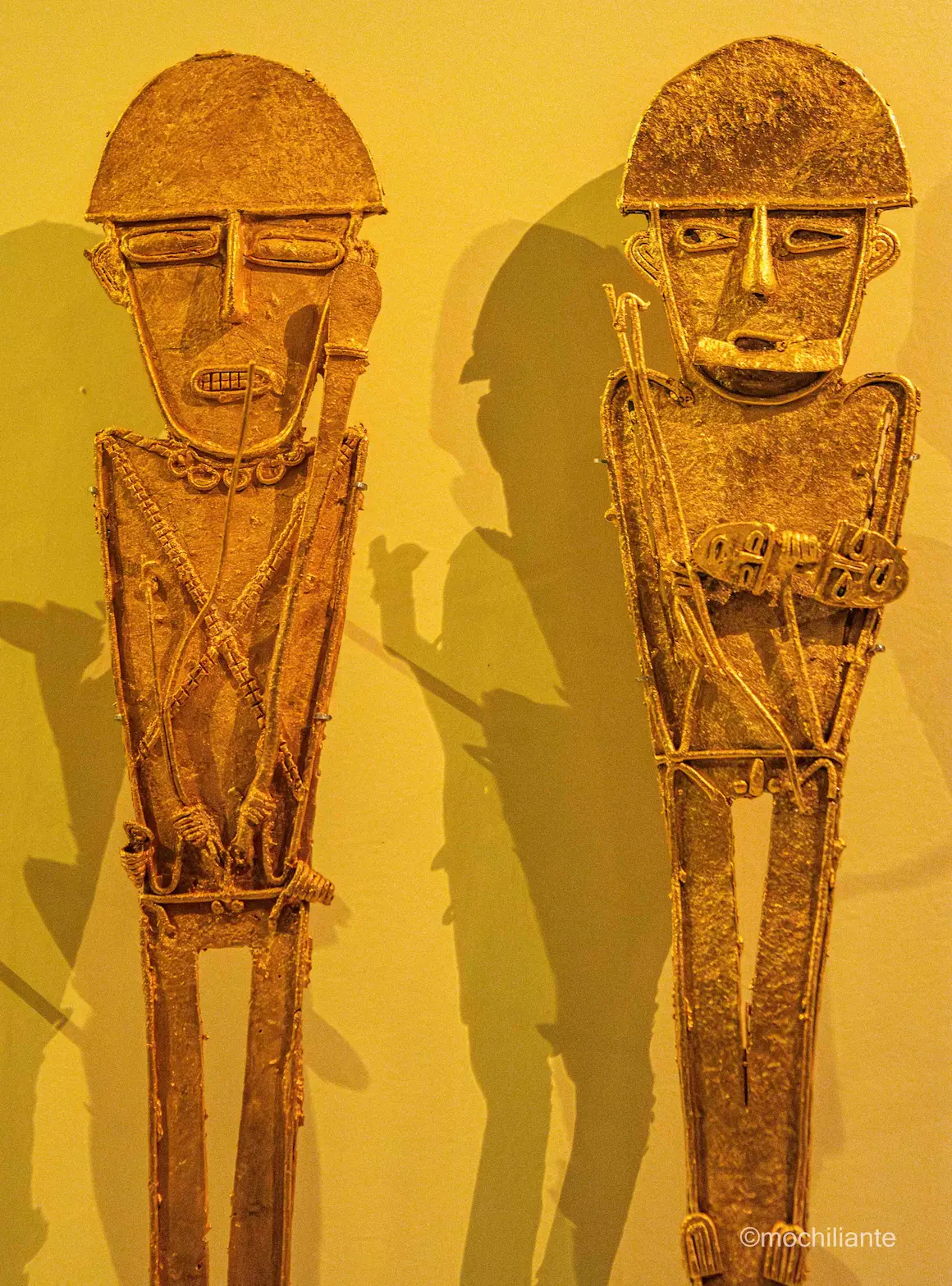
The legend tells the story of a Muisca chieftain who, covered in gold, sailed on a raft to the center of a lagoon, this is called La Laguna de Guatavita. This chieftain was taken by the explorers as the "El Dorado" they were looking for.
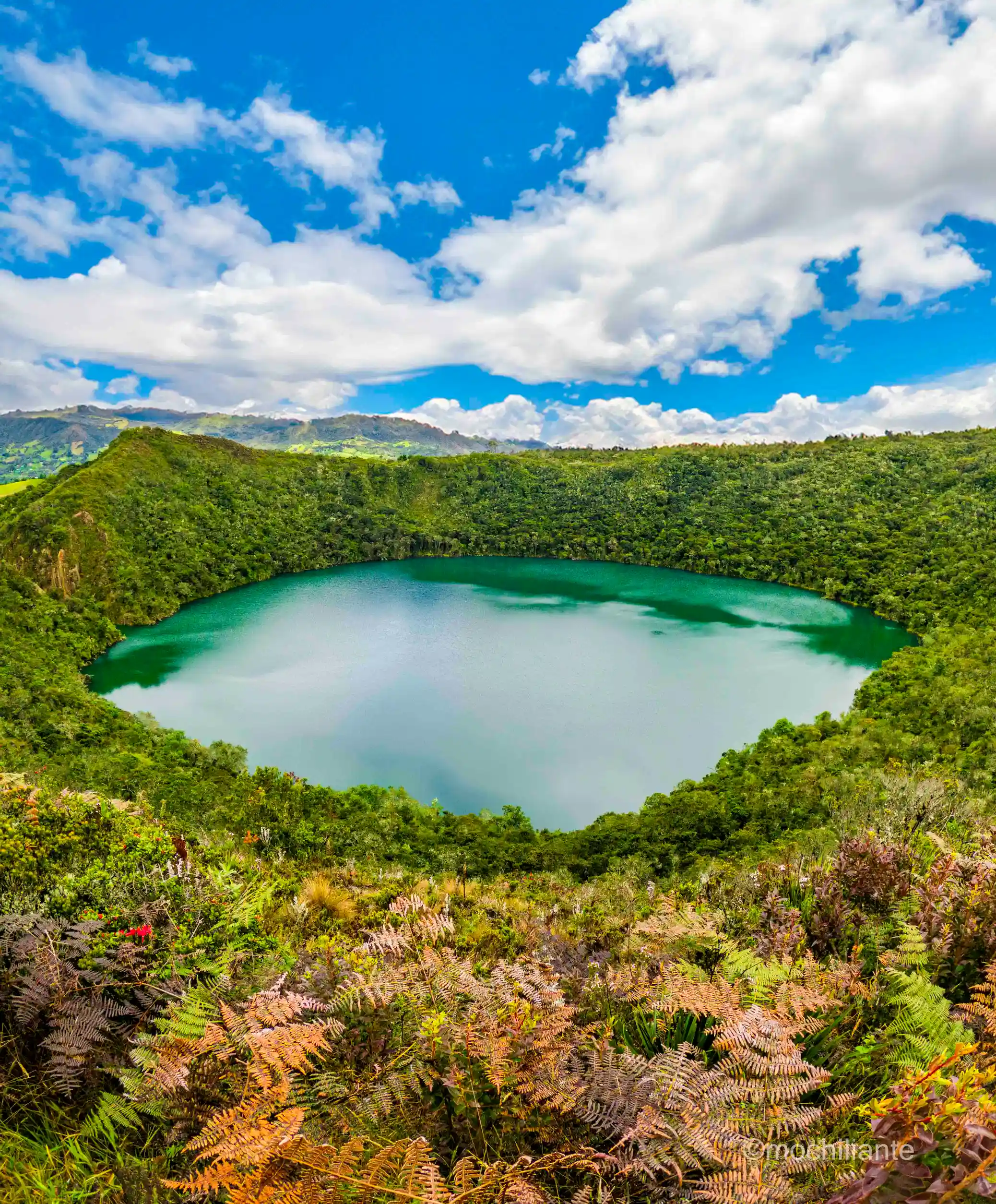
Although they never found a place made entirely of gold, they found many indigenous chieftains adorned with gold and heard stories of golden rituals and ceremonies
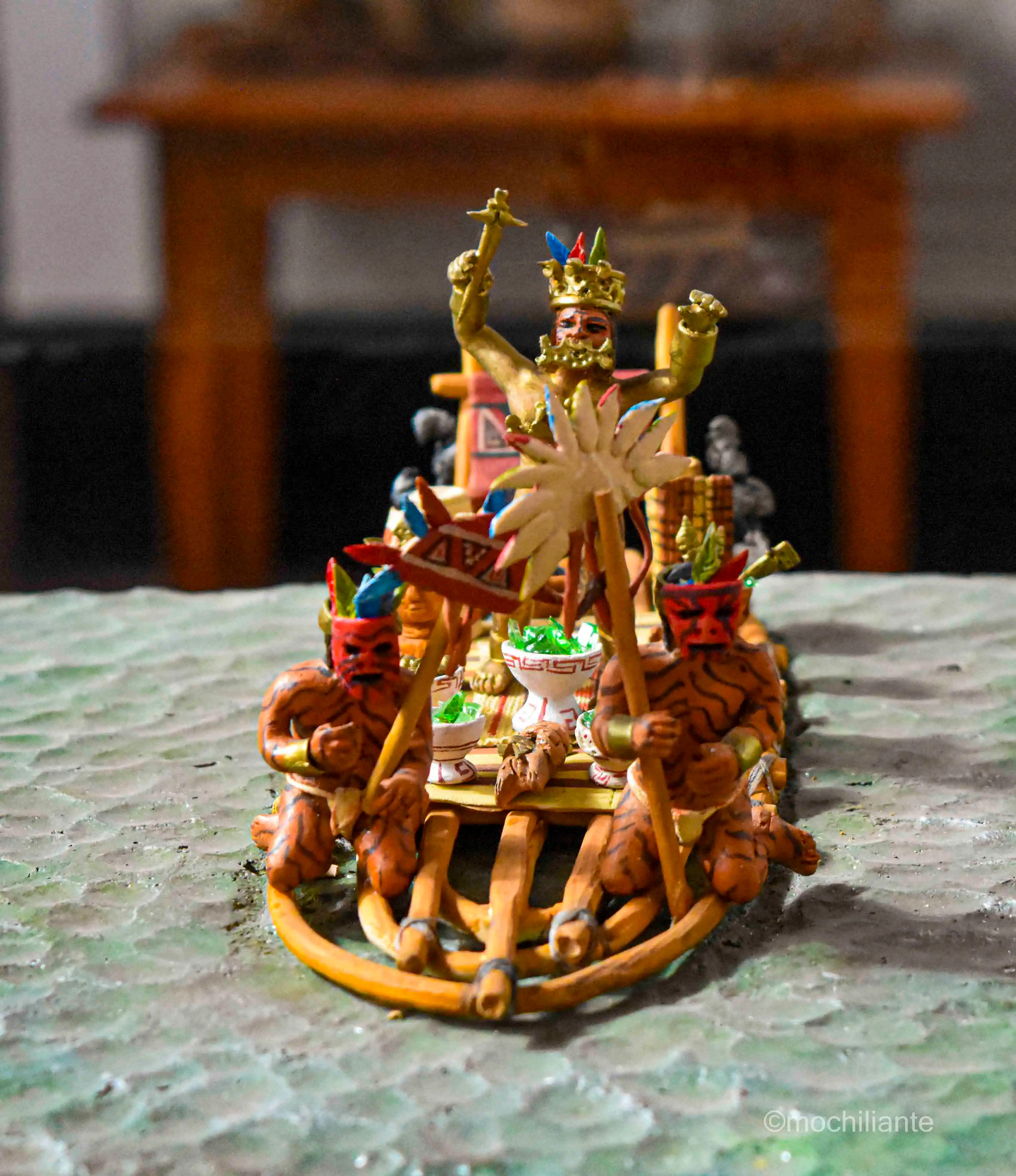
If you want to know more about The Legend of El Dorado, Click Here. We created a guide to visit Guatavita and the Laguna de Guatavita, a very important place for the Muisca culture
This container was used by the indigenous people to store the lime used in the ritual of chewing coca leaves, it is a sample of the advanced goldsmithing technique of the pre-Columbian cultures. The Quimbaya Poporo is famous for its harmonic proportions and advanced technique, and has been adopted as part of Colombia's cultural identity.
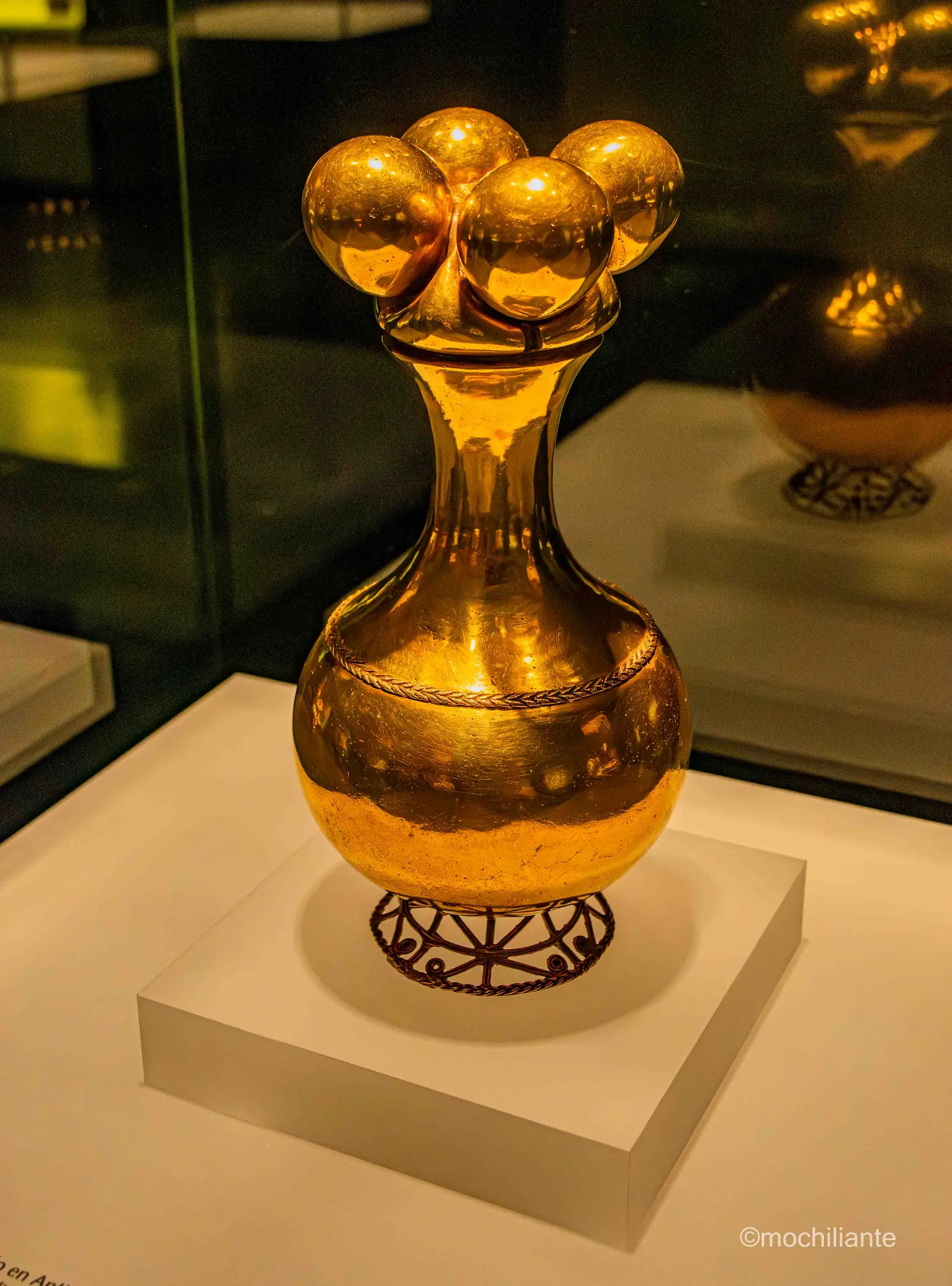
The Muisca Raft represents the ritual that gave rise to the legend of El Dorado. It represents a chieftain covered in gold sailing on a raft in the center of a lagoon, a ritual that was performed to ask the gods for a fertile harvest. The Muisca Raft is an emblem of the Gold Museum and of Colombia.

The Gold Museum offers a variety of exhibitions and activities. You can explore the different rooms of the museum, each dedicated to a different pre-Columbian culture. You can also rent an audio guide that will immerse you even more in the fascinating history of these indigenous cultures
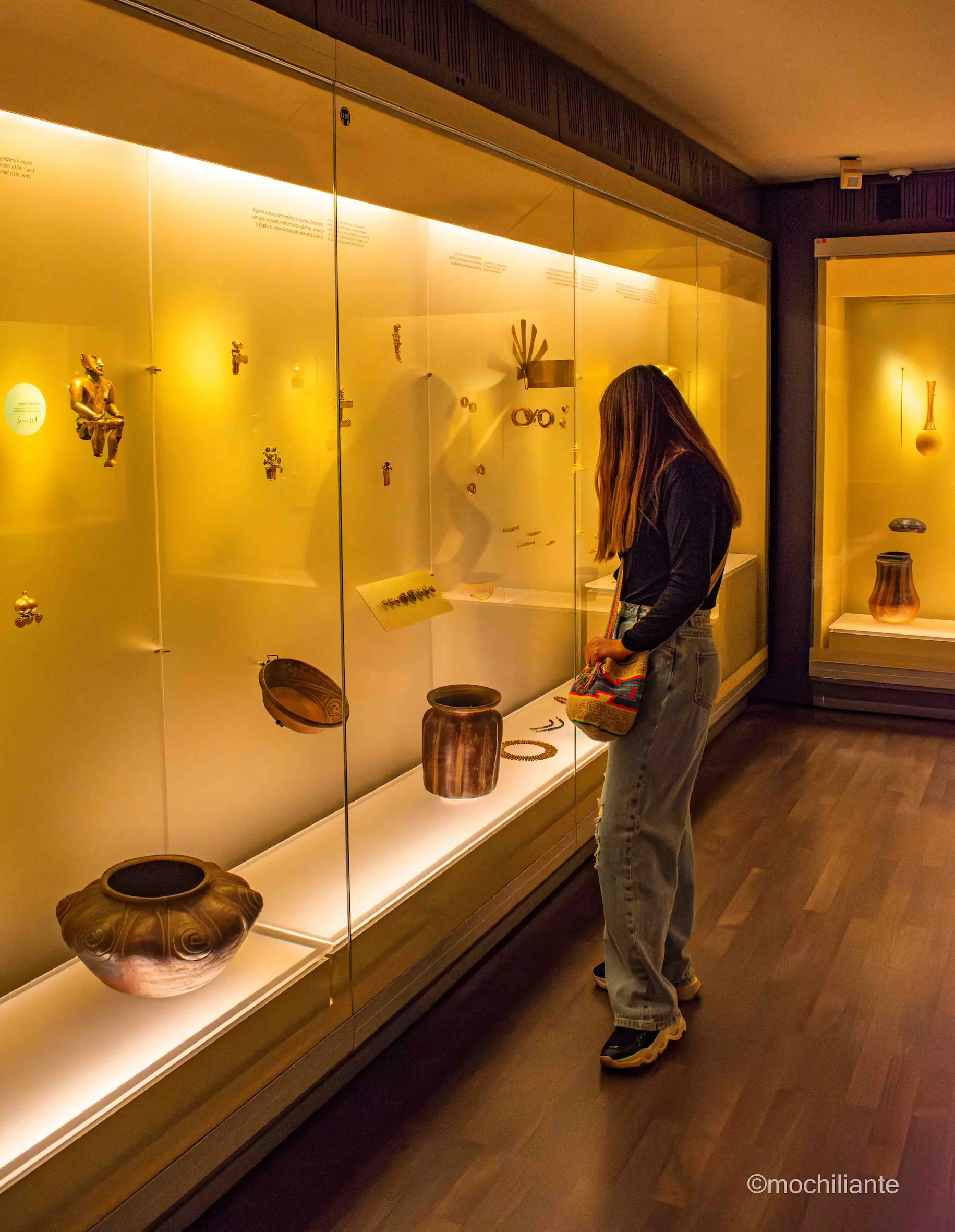
Here are some recommendations that we believe will make your visit more enjoyable:
Explore each room: Dedicate time to each exhibition to appreciate the fascinating stories behind each object.
Use audio guides: Get a more immersive experience by renting an audio guide and learning additional details about the indigenous cultures.
Participate in activities: Take advantage of the talks, workshops, and guided tours to deepen your understanding.
Visit the store: Find unique souvenirs and Colombian crafts in the museum store.
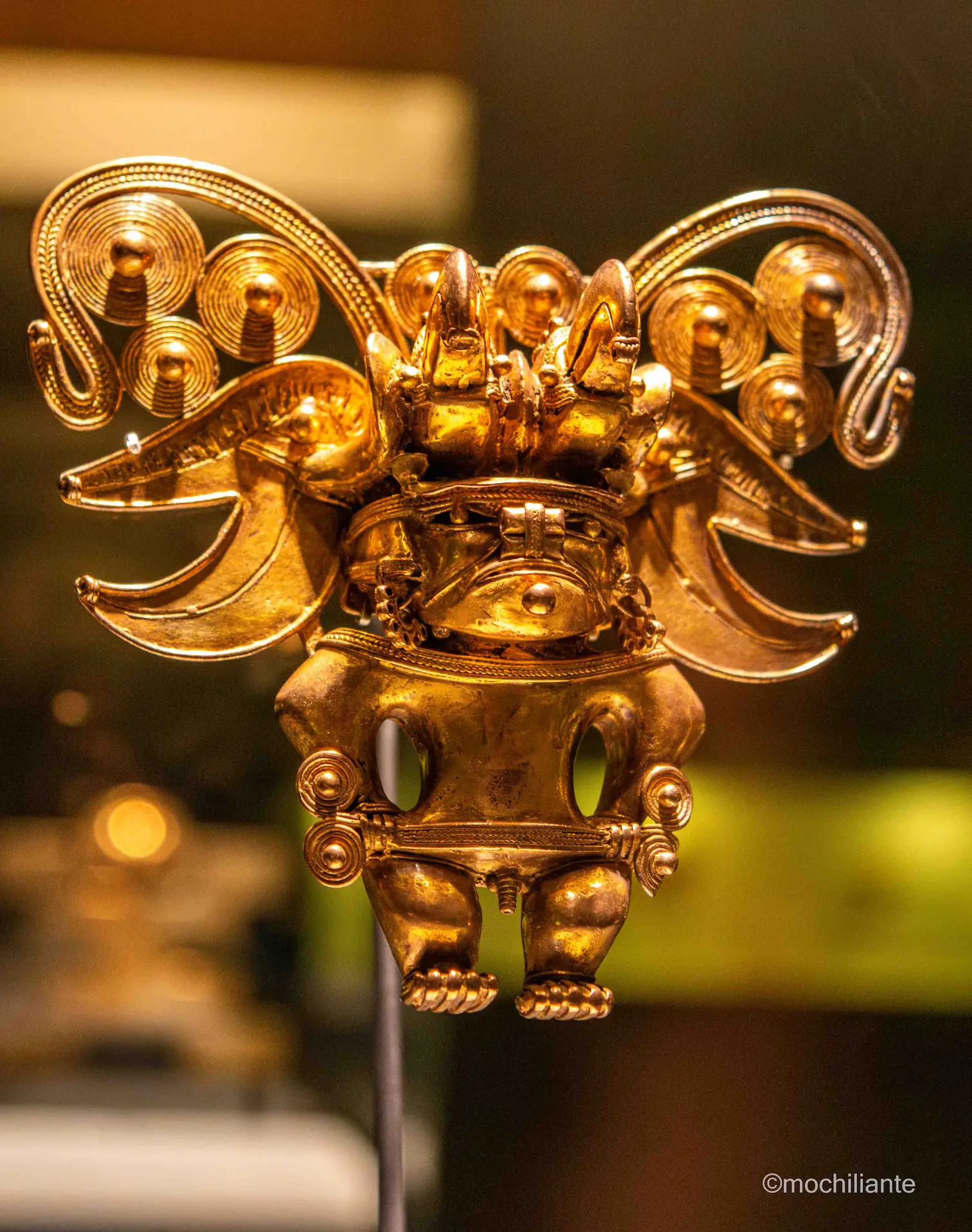
Thank you for reading this guide to the Gold Museum in Bogotá! Ready to explore the cultural and archaeological treasures of Colombia? We look forward to seeing you on a future Backpacker (Mochiliante) adventure! 🫡😉😁
Join the Conversation: Comment, Ask, and Share!